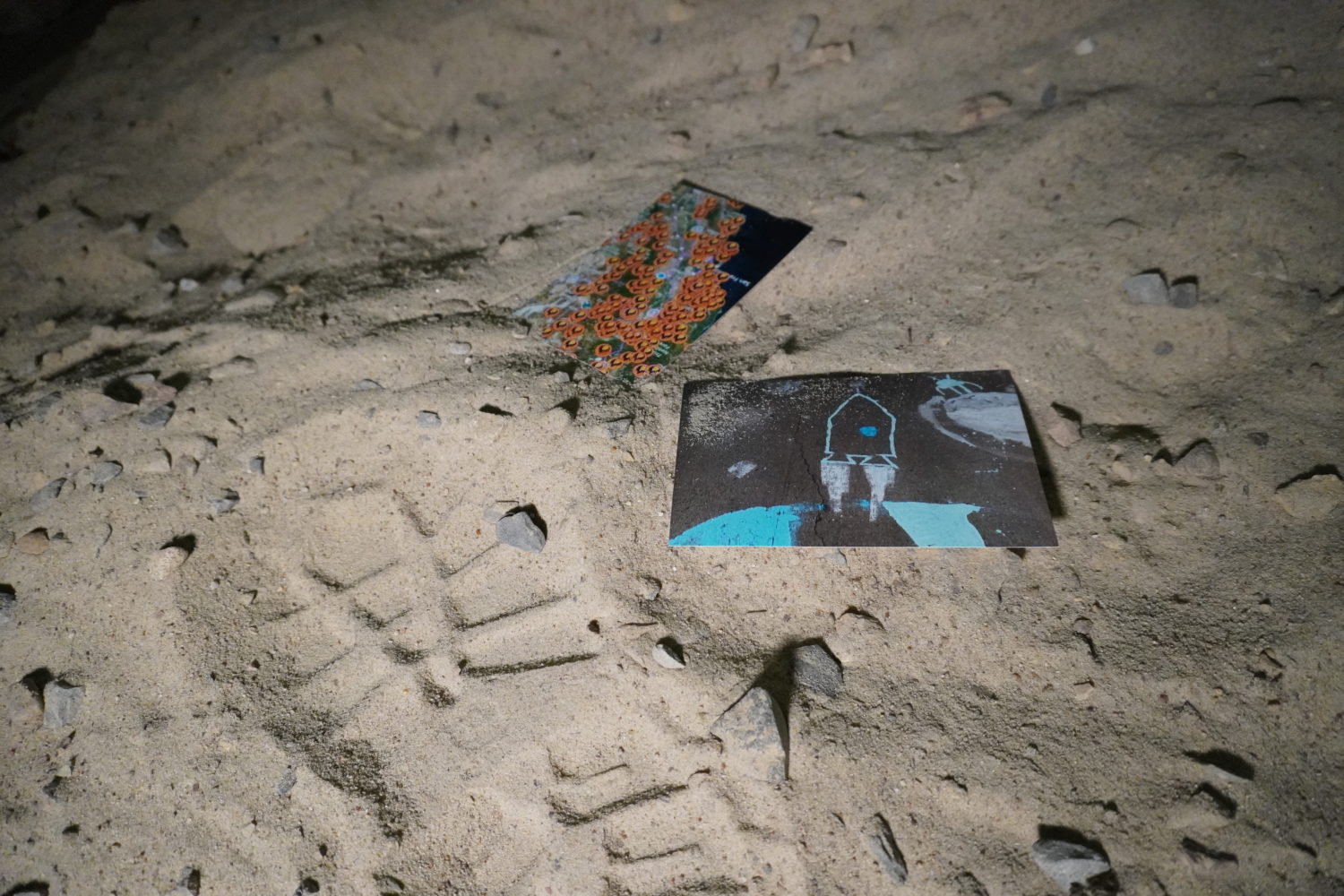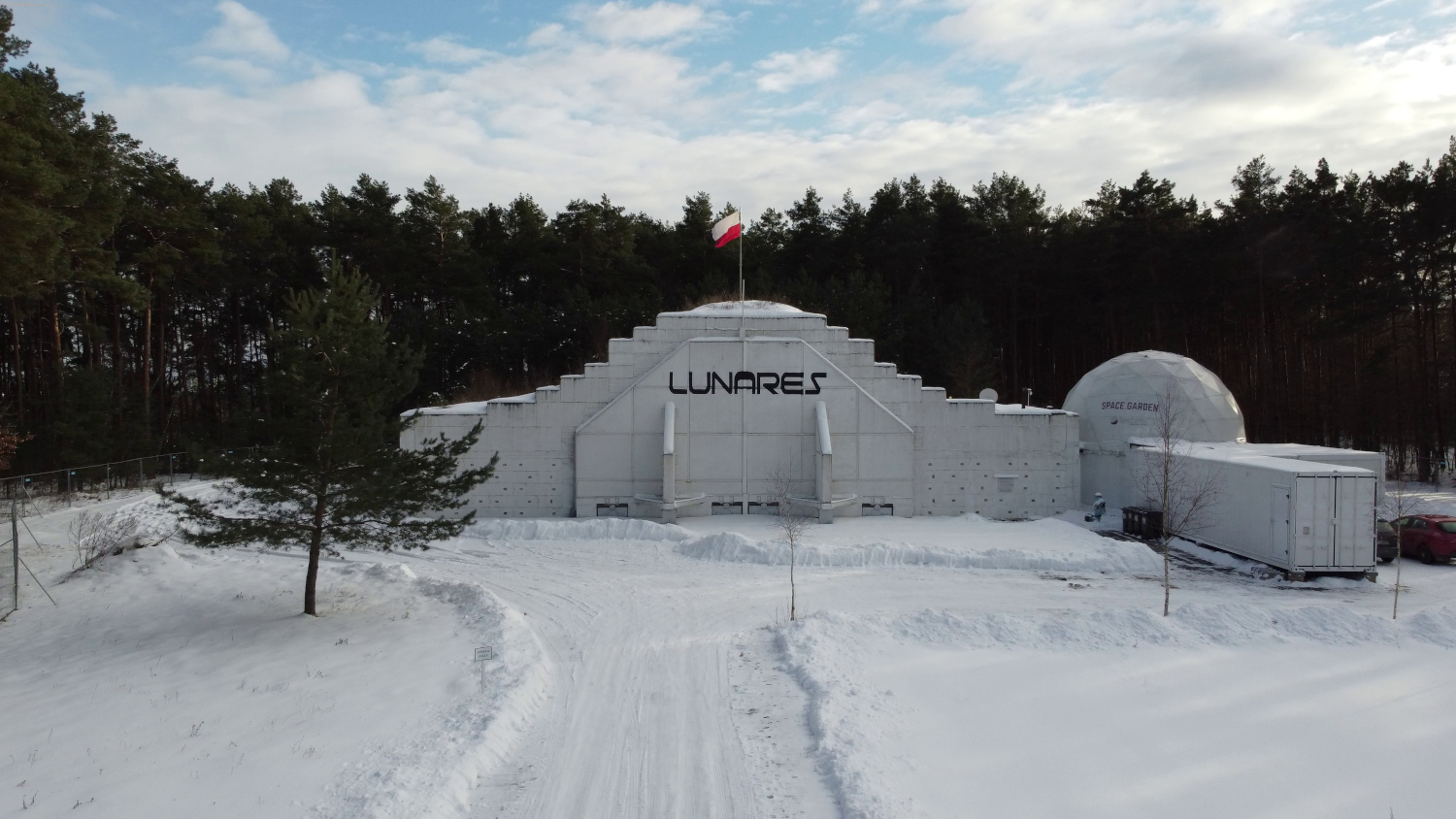Lunares Research Station, Pila, Poland
Moon (Analog Space Mission, 2 WEEKS)
The Lunares Research Base is a specialized facility set on a former Polish Air Force base outside the hamlet of Piła designed to host analog astronauts in simulated missions on the Moon. Lunares was created in 2017 by Space Garden and is the only facility of this type in Europe.
During a mission, crews are physically isolated from the external world, as the habitat has no windows. An airlock from Lunares leads to a specially-designed simulated crater, which is filled with Moon-like basalt rocks, for robotics and other extravehicular activity (EVA) experiments.
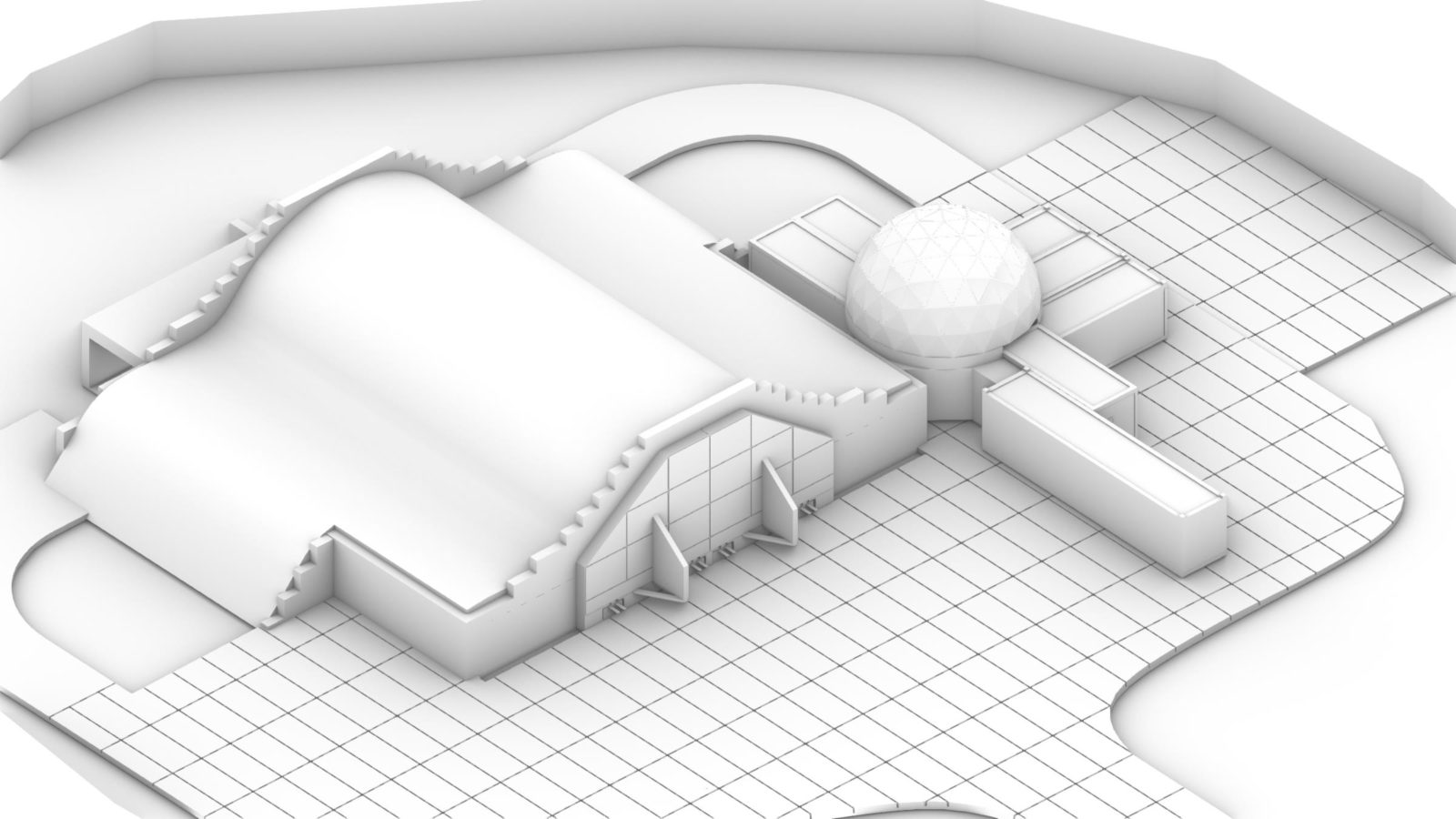
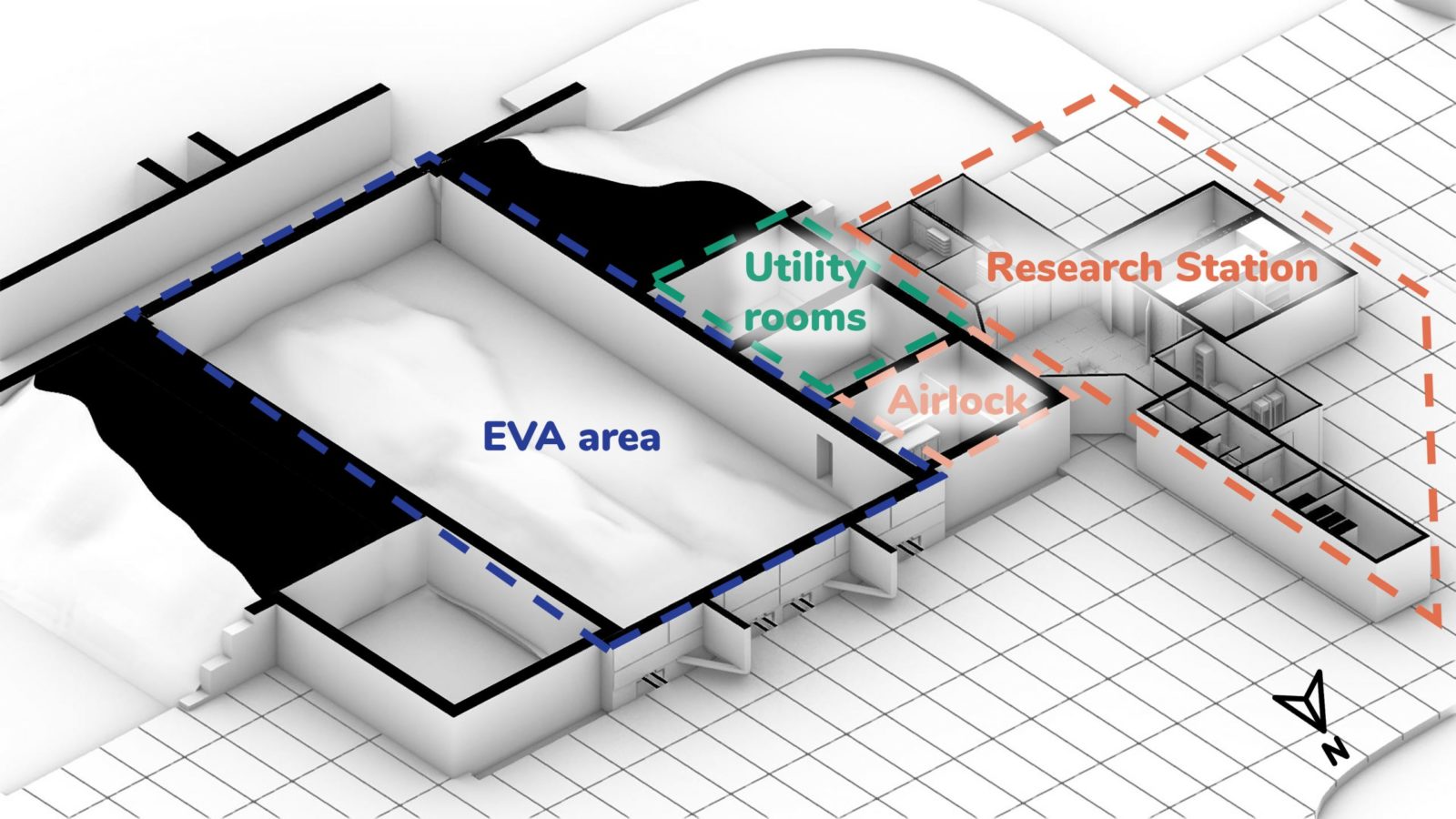
In summer 2021, I was invited to join a team of scientists and space explorers as part of Sensoria’s Mission 4 crew of analog astronauts to undergo a two-week simulated mission on Earth’s Moon. My role on the crew was the Creative Research Specialist, conducting site-specific lunar-based art projects during the mission.
For me, each space analog is not only an opportunity to learn the physical and mental aspects of space travel and co-habitation in extreme environments, but also a destination to prototype and test my artworks that are destined for space, or in this case — the Moon.
My key project for the Lunares Research Base was a year-long crowd-sourced repository capturing text and images submitted during the Covid-19 global pandemic called the Great Pause Project. Using our interactive website, participants from around the world had a collaborative platform to archive their Covid-19 experience. Selected images and quotes will be included in Arch Mission Foundation’s Lunar Library II to be sent to the real Moon abord a lunar lander in 2024.
The Great Pause Project was initiated by myself and two fellow artists Isabel Beavers and Elena Soterakis as a call to action to collect, share, and archive the impact of Covid-19 within households and local communities. We received hundreds of submissions from throughout the United States, but also India, United Arab Emirates, the United Kingdom and more.
Rarely do we experience such vivid moments that reveal our global connectivity in such an undeniable and tangible way. We found that the global pandemic sparked similar epiphanies of our unity as the infamous Earthrise photograph taken from lunar orbit by astronaut William Anders during the Apollo 8 mission.

Just as seeing the whole Earth appear over the rugged lunar surface revealed our oneness, the widespread pandemic did the same. The pandemic offered a different kind of Earthrise moment — no matter where you are on Earth, you are at risk of exposure to the virus given our hyper-connectivity. Earthrise and the Covid-19 global pandemic revealed an undeniable truth — we are interdependent.
As stated by NASA Astronaut Jessica Meir, who was one of three astronauts at the International Space Station observing Earth from space as the pandemic spread below, “ [f]rom up here, it is easy to see that we are truly all in this together.” We found that there is no better place to archive the Great Pause Project then on the Moon with the full Earth in view.
The Arch Mission’s Lunar Library II, serves as a database of key moments in human history etched onto a miniature nickel Nanofiche disk designed to last millions of years. Including the Great Pause Project as part of this archive serves as a record of our past and a warning for future citizens to consider our global connectivity in new ways.
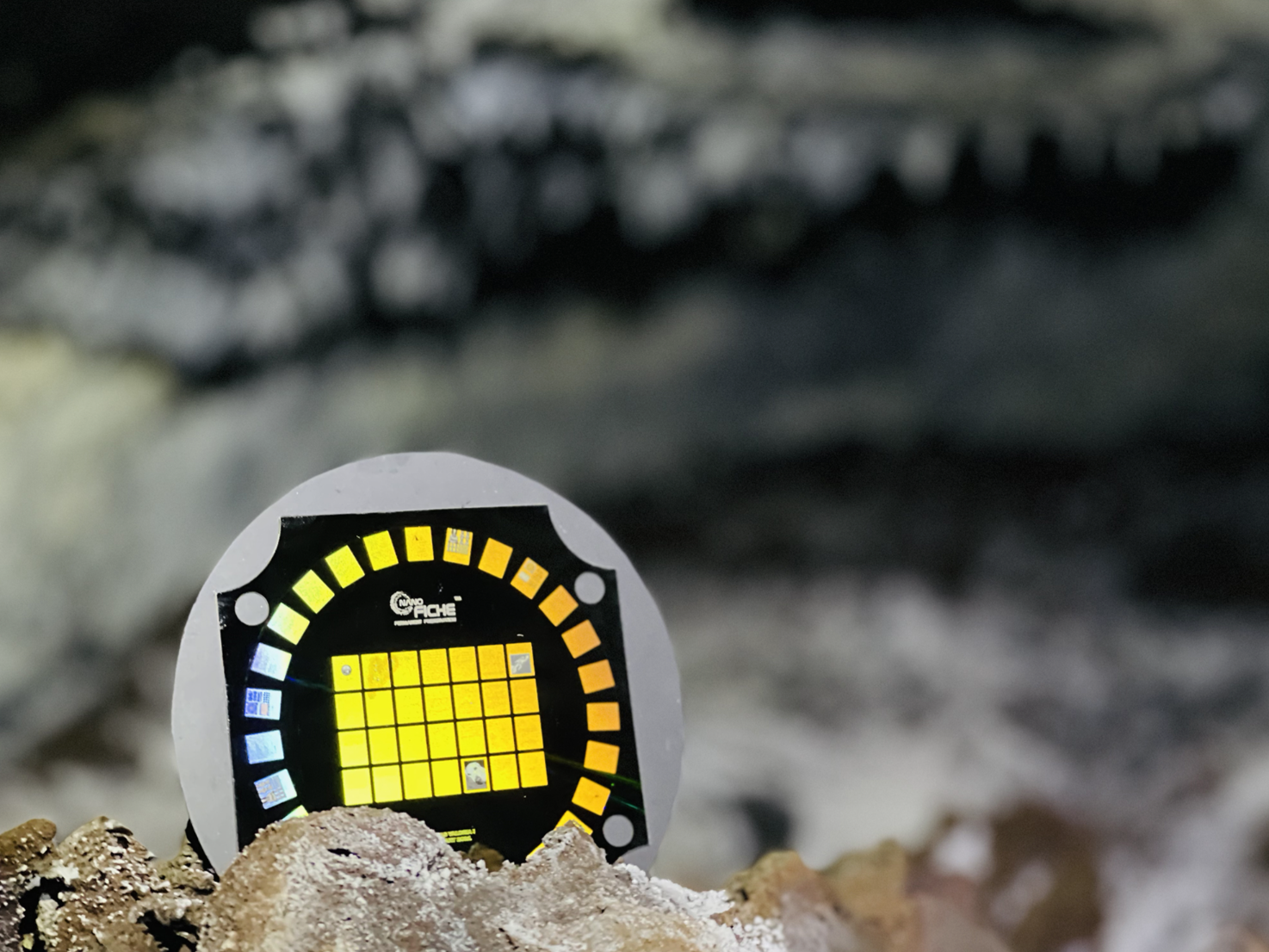
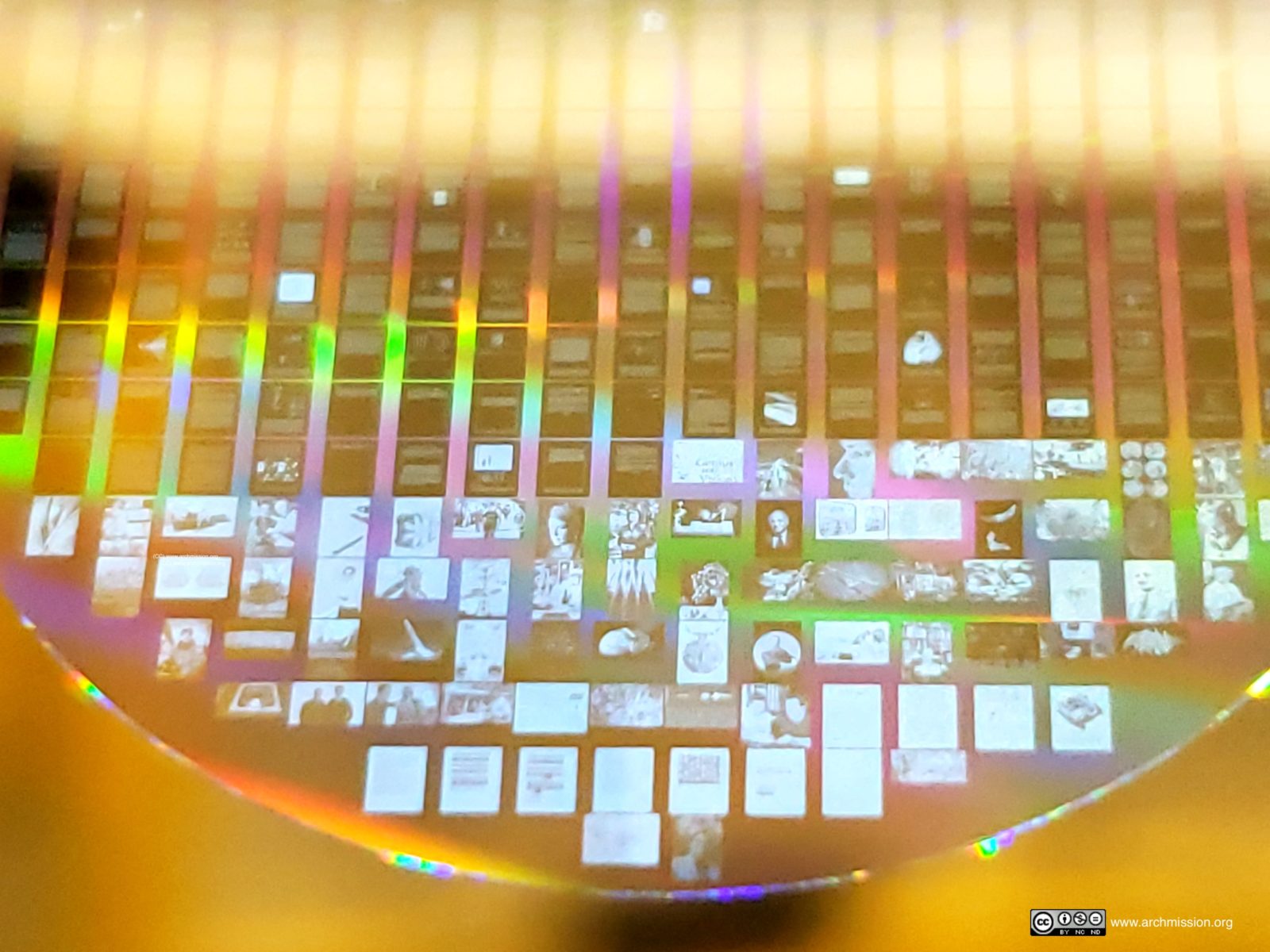
What would it be like to discover the Great Pause Project on the Moon in the future? How will future astronauts respond to these images and texts? What will be the deeper learning upon discovering the archive? I found it was important to simulate this encounter with the Sensoria Mission 4 vcrew. For this reason, analog astronauts uncovered images from the archive on an EVA within the lunar environment.
Since the Lunar Library II is currently in production and requires a microscope to access, digital prints were used in its place, partially buried under rocks and lunar dust. Of course digital images would not withstand the harshness of space, this installation was simply intended to capture the astronaut responses when discovering the Great Pause Project for the first time.
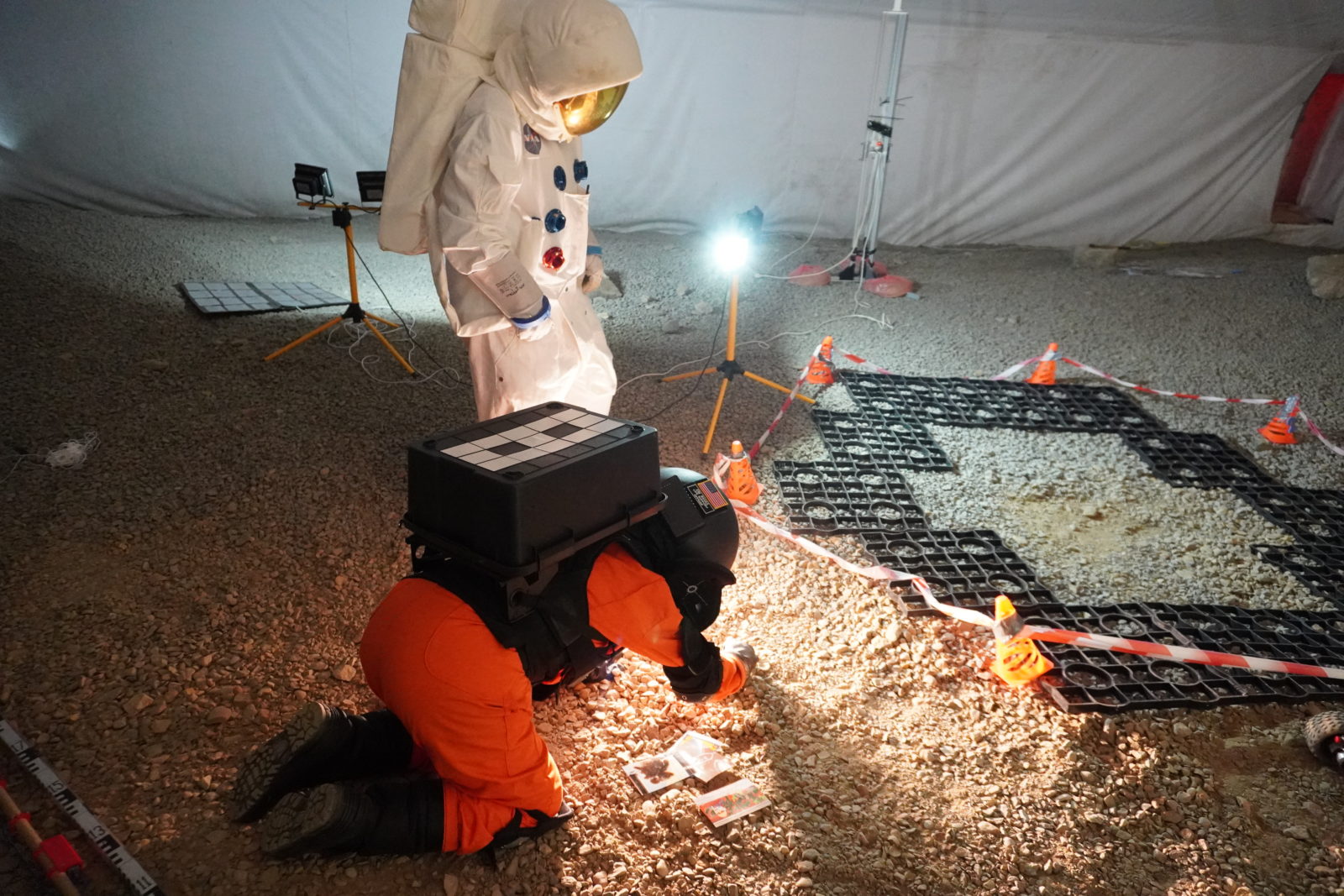
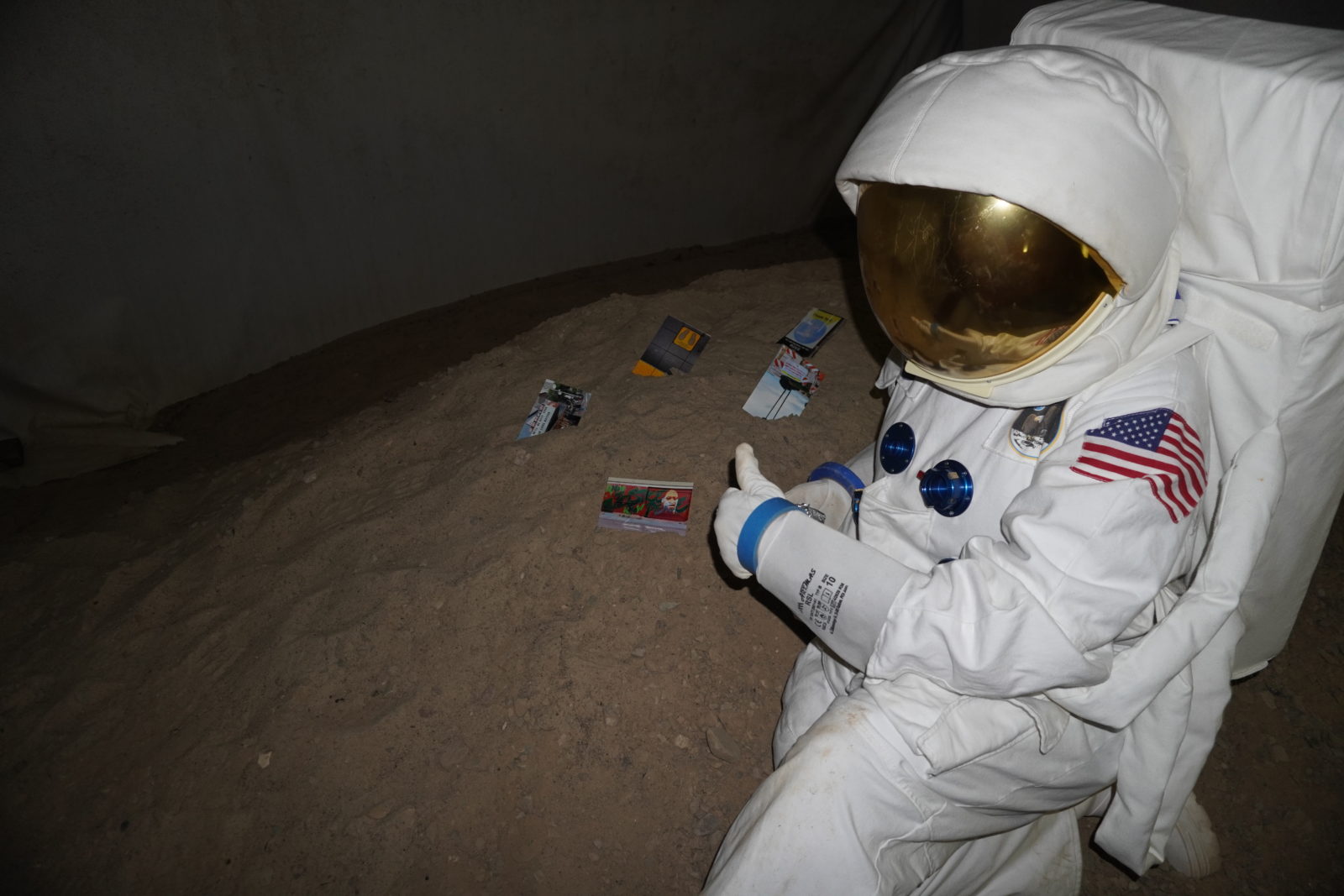
It remains unknown what the experience will be like when the Lunar Library II is found on the Moon in the future, but this let us consider what it would look and feel like. Imagine we are 100 years into the future, and trips to the Moon are as routine as astronaut visits to the International Space Station. Astronauts discover a reflective disk containing microscopic images and texts shining on the lunar surface.
As if finding a treasure or a clue from the past, on close inspection this archive reveals images of people from around the world with medical masks and gloves, images of Black Lives Matter protests, selfies of nurses with face shields, written stories of living in quarantine and so much more. Within each tiny etched image and word is a link to the past, a distant memory that serves as a warning from our ancestors — our Earth is one and we must work together to tackle some of the world’s most pressing issues.
For it is on the Moon, that we can see ourselves. And with this newfound perspective and awareness, we can harness our collective capabilities to overcome the seemly impossible, both on and off Earth.
